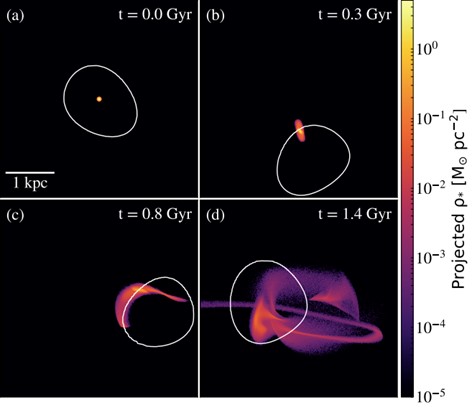
Tom Broadhurst, Ikerbasque researcher at UPV/EHU has just published an article in the prestigious magazine Physical Review Letters in which a simulation of star clusters is made.
In this work it is showed that with new simulations of dark matter as a Bose-Einstein condensate, the puzzling dark cores of dwarf galaxies can be interpreted as soliton waves that continuously oscillate, causing star clusters in these galaxies to randomly walk around within the core.
Simulations of ultralight, ∼10−22 eV, bosonic dark matter exhibit rich wavelike structure, including a soliton core within a surrounding halo that continuously self-interferes on the de Broglie scale. In this article it is shown that as an inherent consequence, the soliton undergoes a confined random walk at the base of the halo potential. This is significant for the fate of the ancient central star cluster in Eridanus II, as the agitated soliton gravitationally shakes the star cluster in and out of the soliton on a timescale of ∼100 Myr, so complete tidal disruption of the star cluster can occur within ∼1 Gyr. This destructive effect can be mitigated by tidal stripping of the halo of Eridanus II, thereby reducing the agitation, depending on its orbit around the Milky Way. The simulations made show the Milky Way tide affects the halo much more than the soliton, so the star cluster in Eridanus II can survive for over 5 Gyr within the soliton if it formed after significant halo stripping.
Such behaviour is unique to this wave-like form of dark matter composed of ultralight bosons, that favours String Theory ideas that lie far beyond the Standard Model of particle physics.
For more information: https://doi.org/10.1103/PhysRevLett.124.201301
.png)
